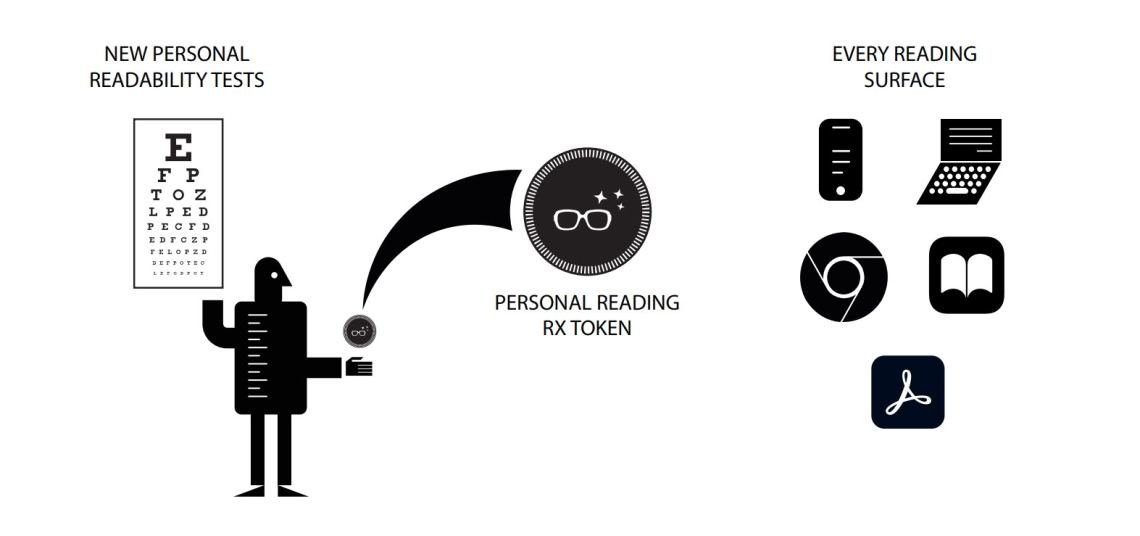Mission
The Readability Consortium’s core mission is to bring digital readability to all.

We pursue this mission through research and engineering, empowering designers and readers alike to better navigate our information-intensive digital future.
Core values
A Community for Reproducible Science
The Readability Consortium leads a growing Readability Research Community dedicated to transparent, reproducible readability science. TRC provides A) a roundtable for industry stakeholder collaborative research, B) in-kind support to researchers and institutions exploring readability, and related inclusive design research, and C) recognition for researchers and designers advancing the state-of-the art in readability science and technology.
Open-Source Tools and Big Data
The Readability Consortium publicly shares 1) the largest open dataset of digital reading behavior ever assembled, 2) free, open-source readability research tools and stimuli, and 3) validated methods and open specifications for readability research and inclusive design.
Members receive protection allowing internal data sharing, early access to data, and early access to tools, including our readable content LLMs built out of OpenAI’s ChatGPT. Full members guide, and assist in, our large-scale data collection and tech-for-good investments.

Topics
Guided by our Director and Full Member Board, The Readability Consortium’s Research Team is actively pursuing the following topics:
Psychophysics of Variable Typography
The Readability Consortium is investing in the basic science and applied potential of Variable Typography. Our Research Team’s translational work is looking to fonts such as Google’s Roboto Flex to tease apart the parameters of a font that help readers. The work applies modern vision science approaches to quantifying the impact of traditional typographic recommendations.
Information Design for the Individual
The Readability Consortium is founded on research showing that readability is individual, requires tools for readers to determine their best reading formats, and can provide individuals dramatic reading performance improvements without training. Our Research Team is developing the scientific underpinnings of portable information ‘prescriptions’ maximizing individual reading potential across every digital surface.
Readability in Education
The Readability Consortium believes our work has significant application in education, where a boost to speed and comprehension may shift the trajectory of student success. Our present efforts focus on bringing our methods to K-12 students. In collaboration with the Virtual Readability Laboratory and other partners, we aim to extend this work to higher education, professional education, older adult education, and beyond.
Readability across Language and Culture
The Readability Consortium’s mission is global. We are engaged in early work validating our methods and findings across cultures, and will soon extend this work beyond English, and beyond alphabets, to symbolic writing systems such as Mandarin Chinese. We will explicitly consider domestic populations engaging in a second language. Readability for all is a big commitment, and the world is a big place, so we are looking for partners with aligning vision that will extend our reach.
Learn More
The Consortium works toward our mission from our home at The University of Central Florida Research Foundation, guided by a board of industry and nonprofit members.
We are actively engaging with new potential members and collaborators, and are interested in conversations with aligned stakeholders actively working to redefine the future of readability interface, e.g., document design, consumer electronics, healthcare, cybersecurity, finance, mixed reality, and beyond…
Contact us
Together we will redefine readability for every individual.
